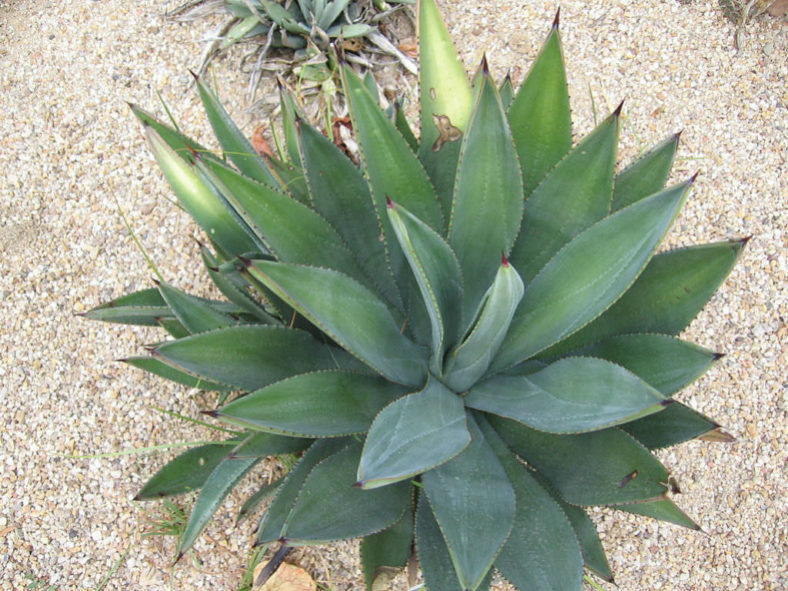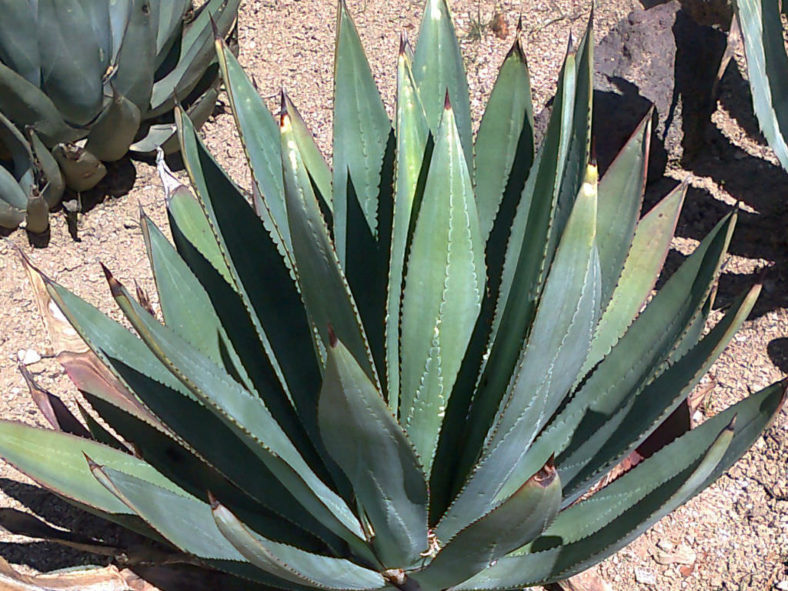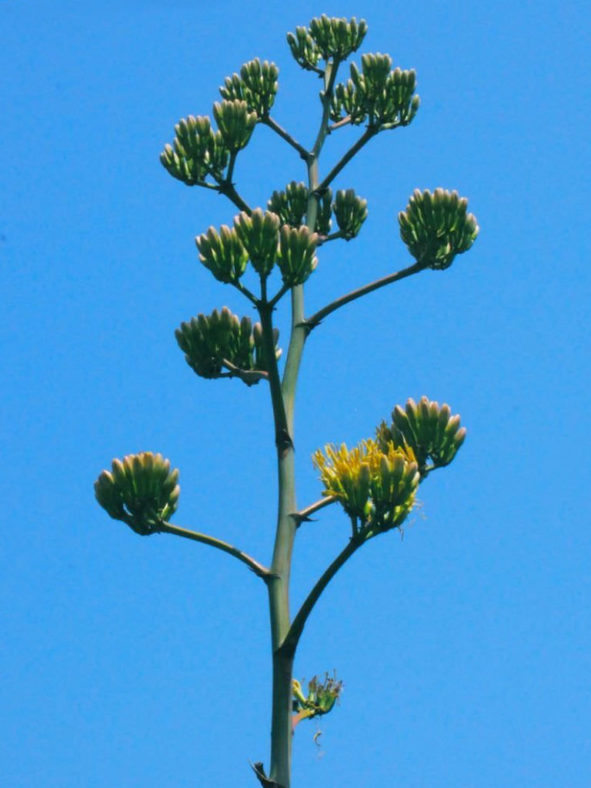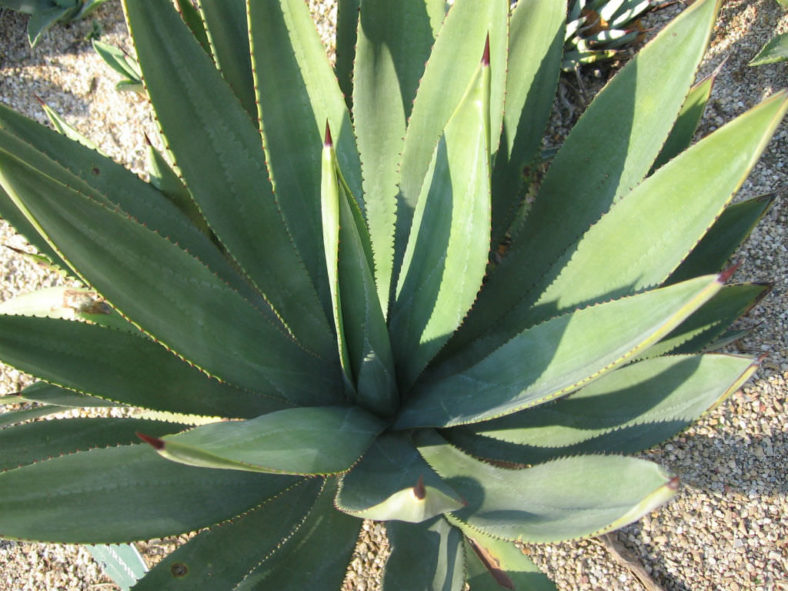Scientific Name
Agave murpheyi Gibson
Common Name(s)
Hohokam Agave, Murphey Agave, Murphey's Century Plant
Scientific Classification
Family: Asparagaceae
Subfamily: Agavoideae
Genus: Agave
Origin
Agave murpheyi is native to the United States and Mexico. It occurs in southern Arizona and northern Sonora, growing only at a few dozen archaeological sites of the ancient Hohokam Indians.
Description
Agave murpheyi is a succulent plant that forms stemless, freely suckering rosettes of light glaucous green to yellow-green leaves with distinct imprinting. The rosettes grow up to 4 feet (1.2 m) tall and 4.6 feet (1.4 m) in diameter. The leaves are spatulate, up to 2.6 feet (80 cm) long and 4 inches (10 cm) wide. They have small and closely spaced teeth along margins and a dark brown to grayish spine at the apex. The terminal spine is up to 0.8 inches (2 cm) long.
A mature rosette produces a tall stalk with clusters of 12 to 21 erect flowers at the branches. The flower stalk can reach up to 13.1 feet (4 m) in height. The flowers are pale green-yellow, have a very short open tube, and can grow up to 3 inches (7.5 cm) long. The fruits are woody, rounded capsules that can reach up to 2.8 inches (7 cm) in length. This plant sets no viable seed but produces bulbils on the stalk branches.

Hardiness
USDA hardiness zones 8a to 10b: from 10 °F (−12.2 °C) to 40 °F (+4.4 °C).
How to Grow and Care
Agaves are not difficult plants to grow. They are slow-growing and dramatic and will even thrive on a bit of neglect. If you are the type of person who likes to fuss with houseplants and water a lot, Agave is probably not the plant for you. However, if you want to set it and forget it and have a sunny window, Agave might be the way to go. Be aware that some large varieties will eventually outgrow your room (unless you have a large greenhouse), and Agave can be aggressive. They have irritating sap and sometimes very sharp thorns that can cause injuries to small children and even pets.
In general, Agaves do not need to be repotted every year. Most species commonly found in cultivation grow slowly and take a long to outgrow their pot. It is also best to handle your plants as little as possible since they do not like to be disturbed. When you do repot, refresh the spent soil with a new potting mix and make sure the plant is firmly anchored in its pot. However, do not pot the Agave too deep to encourage stem rot during the growing season.
Learn more at How to Grow and Care for Agave.
Cultivars
Links
- Back to genus Agave
- Succupedia: Browse succulents by Scientific Name, Common Name, Genus, Family, USDA Hardiness Zone, Origin, or cacti by Genus
Photo Gallery
Click on a photo to see a larger version.


